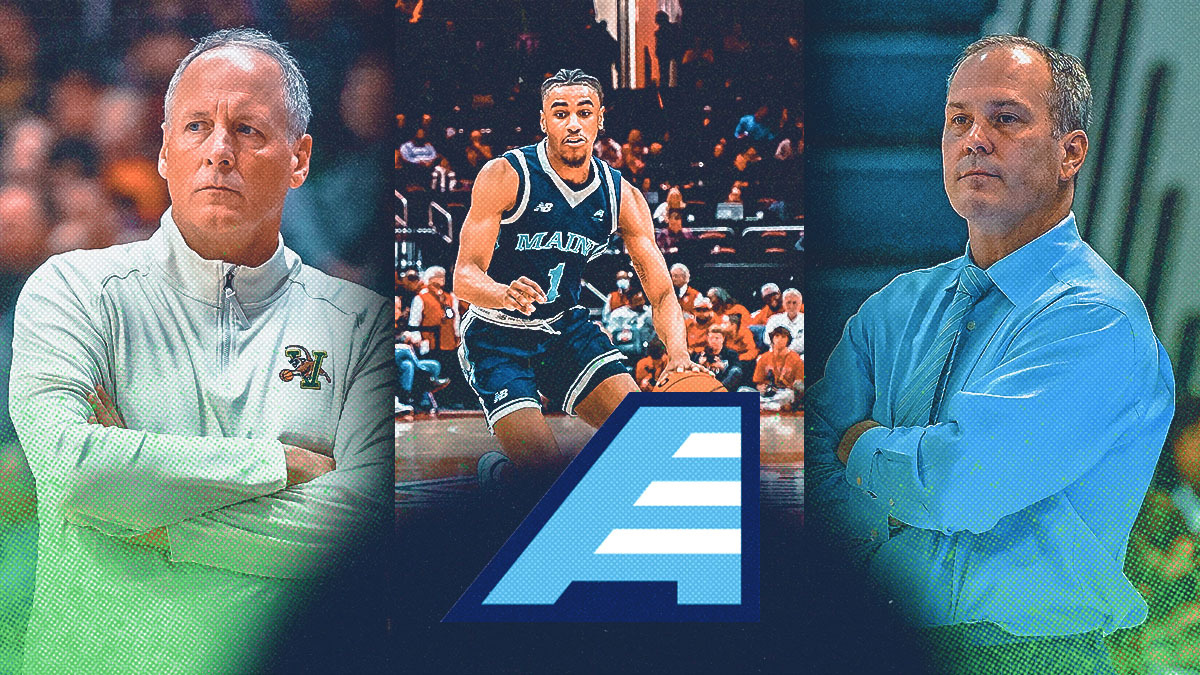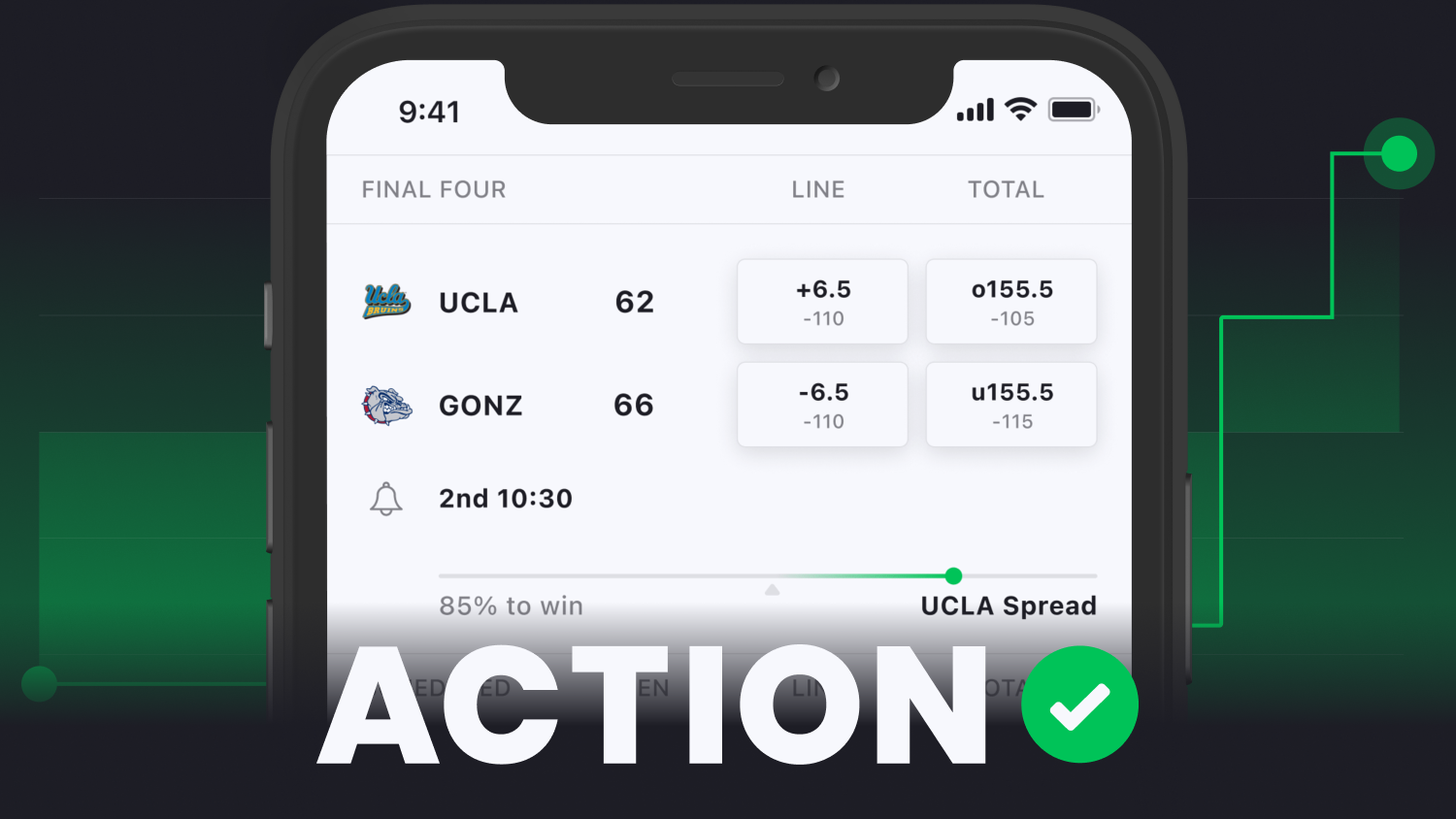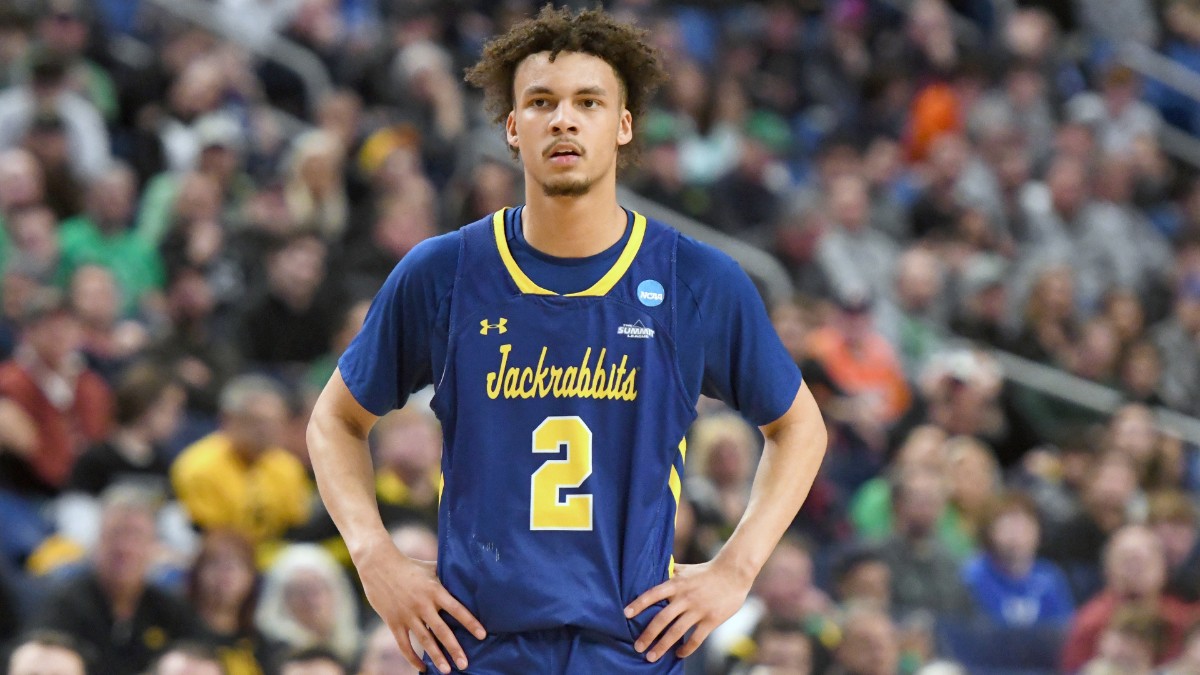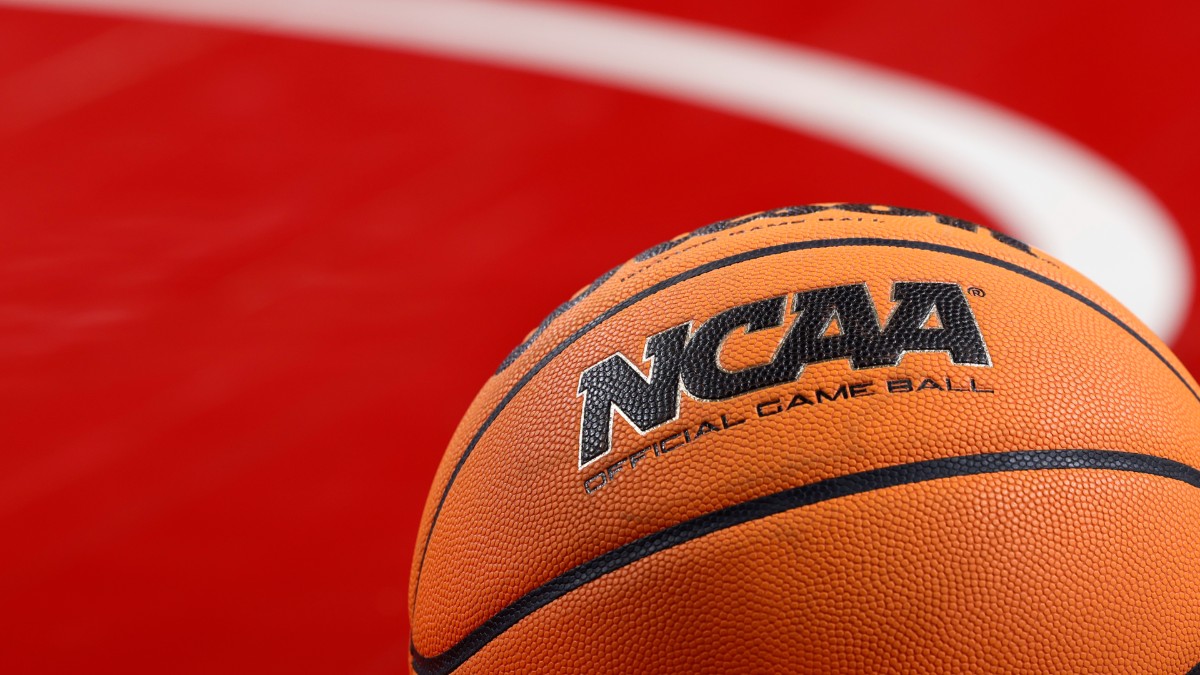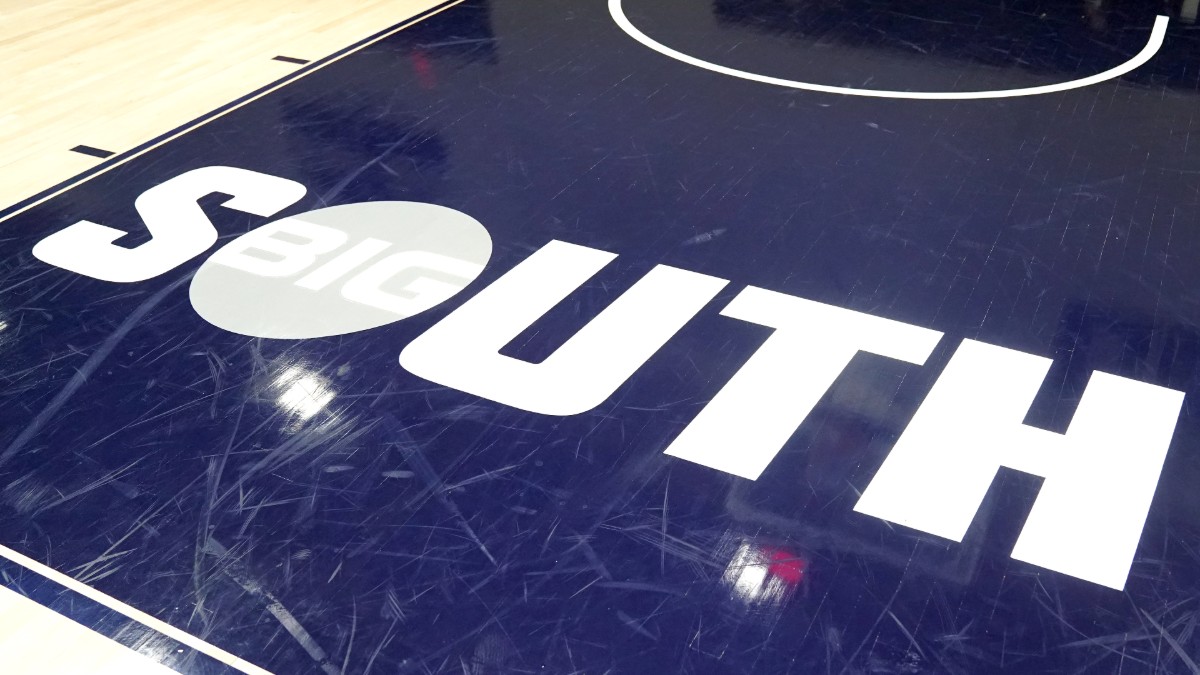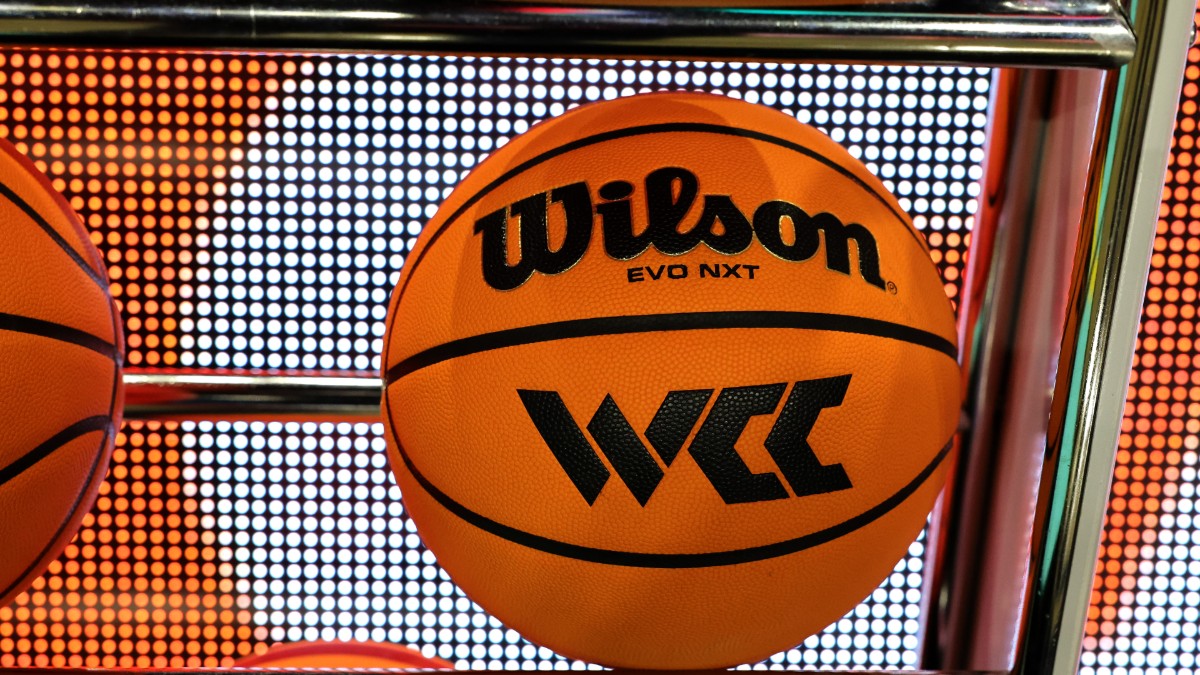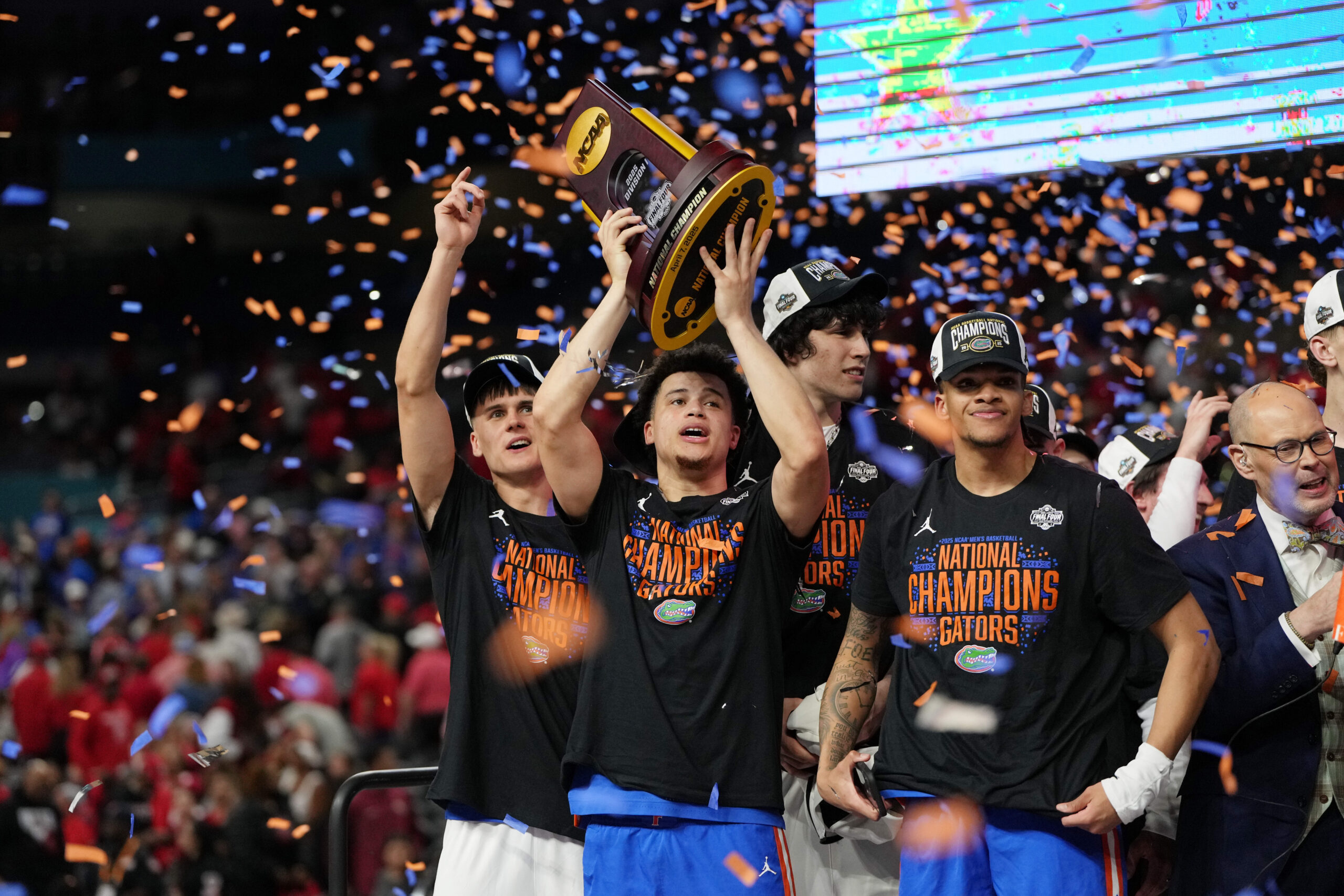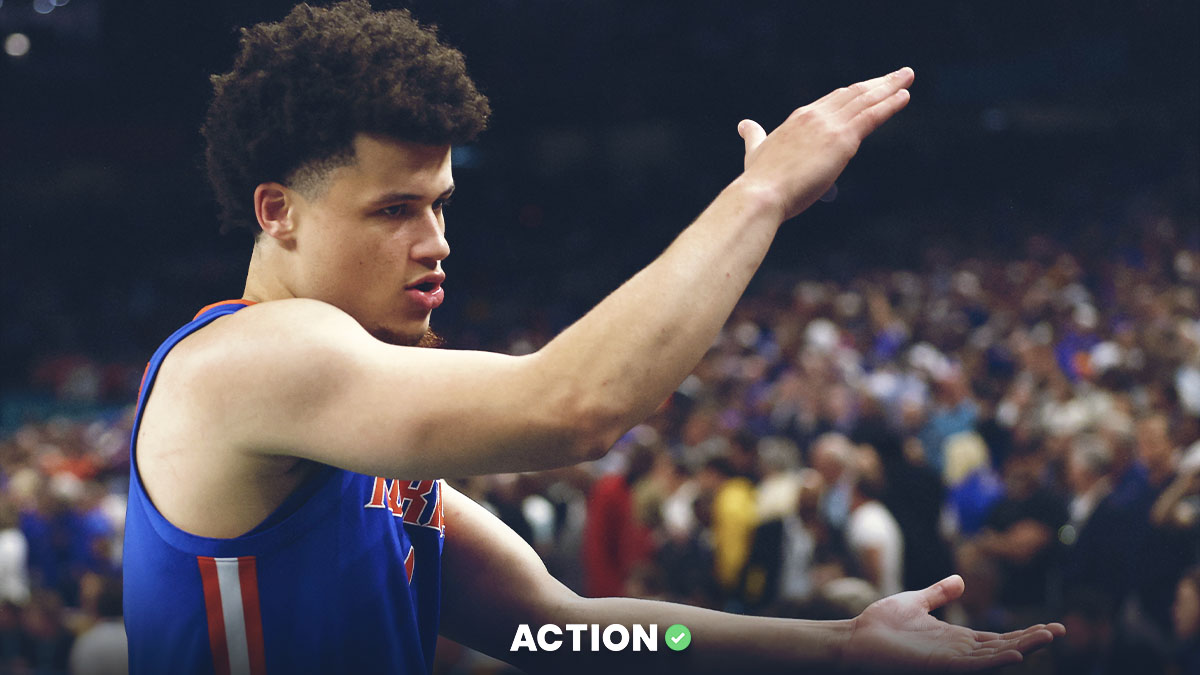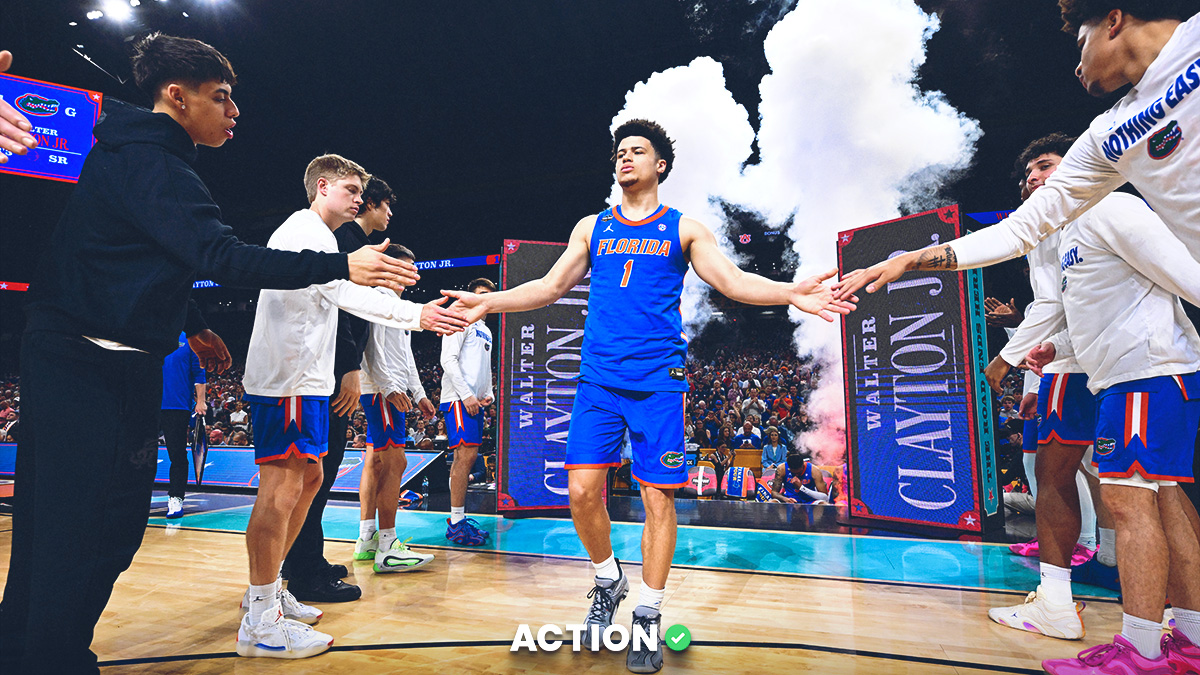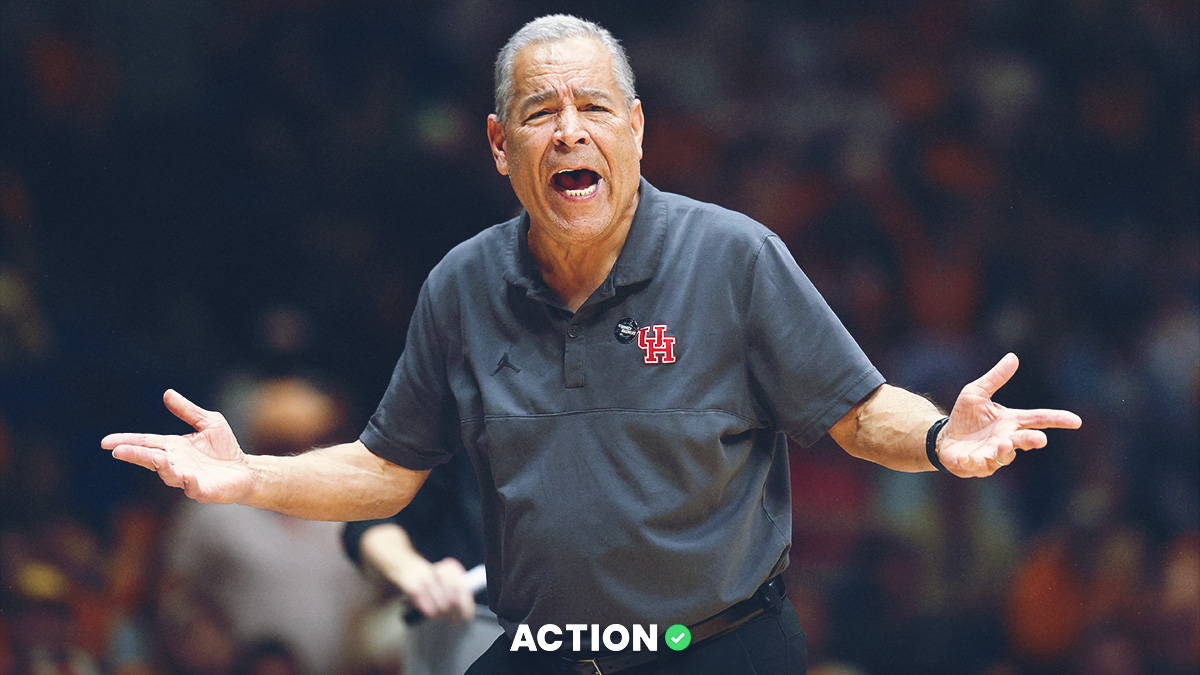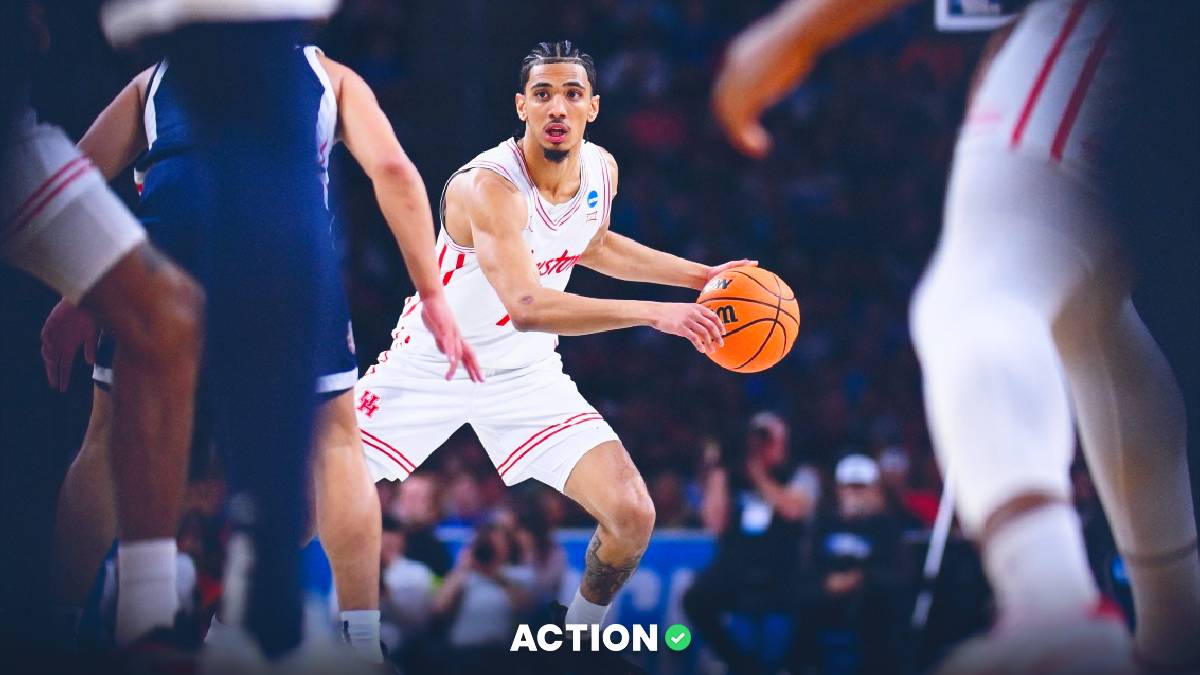I grew up in Southern Vermont, in the small town of Manchester. And I grew up on Vermont basketball.
As I followed the Cats through the years, I began to love all the America East teams.
Somehow, I’ve convinced my editors to let me cover the AmEast in-depth for The Action Network.
So, needless to say, these America East preview pieces are the most important things I write all year.
This season, I pulled out all the stops. I interviewed four of the league’s nine head coaches for this season's preview piece, including the coaches for the two league favorites.
During my interviews, I asked each an extra question: What makes America East basketball as good as, or better than, Power Five basketball?
Each coach had loads to say, but here are a few of my favorite lines:
Vermont Head Coach John Becker: “We have a lot of state universities, and that’s something I always take pride in, having an opportunity to coach at the flagship University of Vermont.”
UMass Lowell Head Coach Pat Duquette: “The difference between team one and nine … I hate to be cliché, but any team can beat anyone on any given night, and a lot of the top-tier conferences don’t have that."
New Hampshire Head Coach Nathan Davis: “This isn’t a cookie-cutter league. You’re going to see a lot of different ways of playing the game, which is exciting.”
Albany Head Coach Dwayne Killings: “Whoever wins the league, the team that is rewarded the opportunity to compete against them in the tournament doesn't sleep well at night because there’s a great chance they can upset you. We've seen it before.”
Part of my job covering the America East is getting bettors excited about the league. I hope this helps.
And if it doesn’t, perhaps my AmEast expertise will. I went 25-15-1 betting on or against America East teams last season and cashed my Vermont Conference Tournament Ticket (-160). The prior season, I hit 70% of my AmEast plays.
So, if you’re looking for a mid-major league to watch and gamble on, follow me and strap in for another year of America East basketball.
Here's how I think it'll play out.
America East Regular Season NCAAB Conference Title Odds
| Team Name | Odds (Via Caesars) |
| Vermont | -170 |
| UMass Lowell | +260 |
| Bryant | +650 |
| Maine | +1500 |
| NJIT | +1800 |
| New Hampshire | +1800 |
| UMBC | +2000 |
| Binghamton | +2500 |
| Albany | +6000 |
Tier 1: Championship or Bust
Vermont Catamounts
Vermont is a dynasty. The Catamounts have won seven straight America East regular-season titles and five of the past seven America East conference tournaments.
Coach Becker, how do your Vermont Catamounts do it year after year?
“Each group doesn’t want to be the one that doesn’t win it,” he tells me.
Even as players go – the Catamounts lost three all-league players this offseason after replacing their entire frontcourt the prior one – returning vets provide leadership because “they don’t want to let their guard down, and they don’t want to be in the group that doesn’t win it.”
Meanwhile, transfers come here because they want to win. Dylan Penn transferred in from Bellarmine last season because he wanted to play in the NCAA tournament, something he accomplished in Catamount Green.
“The new guys, the four transfers we have, all come from losing programs," Becker says. "They come here to win and to go to the NCAA tournament. They’ve all bought in pretty quickly.”
This year, the veteran group starts and ends with guard Aaron Deloney.
The reigning two-time America East Sixth Man of the Year is primed to make a James Harden-esque jump to Conference Player of the Year. Seven straight AmEast POYs have come from Burlington, and Deloney is the favorite to be the eighth.
Deloney is an explosive off-ball scorer. He’s led the Catamounts in points per 40 minutes over the past two seasons (19.9 and 20.1) and has done it efficiently (55.5 eFG% last year). He’s consistently come off the bench and provided a spark, taking over games with elite 3-point shooting (40.6%) and slashing (1.05 PPP on drives last year).
Deloney can create on his own or score off action plays. He’ll push the ball in transition, happy to get to the hoop or pull up on a dime. He can do it all, which he showcased in a 32-point outing against Brown last year.
“In Aaron’s case, the offense has always been there,” Becker says. “He’s really dynamic on that end of the court.”
Deloney is half of a formidable inside-out duo. The other half is returning center Matt Veretto.
Veretto’s story is fantastic. After playing one year with Delaware in 2019, he gave up college basketball, transferring to UConn to get his degree and find a post-grad, “adult” job.
But after three years off the court, Veretto couldn’t shake the basketball itch. With only a few days to spare, he threw his name into the transfer portal, and Becker came calling. Vermont had scouted Veretto in his high school days and was still interested.
Veretto was a revelation. He’s a pick-and-pop big who can shoot the 3 (41.1%) and punish smaller defenders that switch onto him (1.167 post-up PPP, 64 2P%). He's a crafty lefty with silky-smooth footwork and a smooth southpaw shooting stroke.
Yet, his playmaking still goes under the radar, as he’s excellent at seeing the floor and excelled dishing the ball in Becker’s four-guard motion offense.
Robin Duncan racked up over four assists per game as an inside-out big man last season. Veretto could do the same this year.
Veretto is as good of an all-around big man as you’ll see. He was vital in Vermont’s championship run last season and should be again this year.

But back to Deloney. What’s the key to jumping from explosive bench scorer to conference player of the year?
“For Aaron, or any player, it’s how long you can hold up on the defensive end,” Becker says. “The expectation is that he’ll start this year and carry a bigger workload, but in order to do that, he has to stay on the court, and in order to do that, he has to hold up defensively.”
Deloney’s defense was passable last season. He was solid in ball-screens (94th percentile in pick-and-roll PPP allowed) but struggled closing out on defenders (25th percentile in spot-up PPP allowed).
For what it’s worth, Becker has said Deloney’s become much more “dependable” on defense during the offseason.
Also, Veretto could’ve been better defensively, as he struggled to defend down low (28th percentile in post-up PPP allowed).
However, the two might not need to be elite defenders for Vermont to be an elite defensive team.
The Vermont frontcourt returns almost entirely intact, and big man Ileri Ayo-Faleye has become the team’s defensive stalwart.
He never played much at Rhode Island but became crucial to Vermont’s championship run last season. He finished the season with the team’s highest Defensive Bayesian Performance Rating, per EvanMiya, and was the team’s best post-up defender (.513 PPP allowed, 93rd percentile).
Vermont was shredded in the post during the first half of last season, but Ayo-Faleye’s improvements singlehandedly fixed the interior defense.
He’s arguably the most significant reason the Cats were able to battle with UMass Lowell’s frontcourt down the stretch – Vermont allowed 14 points on 12 post-up opportunities in an early-season loss to Lowell, but allowed only eight on 13 possessions across the next two matchups, both Catamount victories.
Vermont’s defense was about 15 points per 100 possessions better with Ayo-Faleye on the court than off. The Cats' rim defense was 11% better with him than without him.

“I don’t know if I’ve had a player improve more than Ileri did last year,” Becker says. “He just hadn’t done a lot of the fundamental stuff before he got here, like learning how to close out, slide defensively and some of the technique stuff we were able to teach him to go along with his athleticism.”
“We’ve really unlocked a guy that’s competitive and plays hard. He’s really, really good.”
Additionally, the incoming guards will provide a big defensive boost.
Shamir Bogues was a standout defensive player at Tarleton State, earning back-to-back all-defensive honors in the WAC. He ranked in the 95th percentile of players in Hakeem Rate last season (block rate plus steal rate) at 5.5%. He’s lengthy with a high motor.
“Bogues has stuck out as a transfer wherein we knew his defensive capabilities, but they’re even better than we thought,” Becker says. “He potentially could be as good, or the best defender, at that position as we’ve had in our program, which is saying a lot.”
“Between Ileri and Shamir, I think we have two of the best defensive players in the league.”
Meanwhile, Bowling Green transfer Brenton Mills is a standout defender in the half-court, ranking above the 80th percentile of players last season in pick-and-roll PPP allowed, handoff PPP allowed and off-screen PPP allowed.
Catamount Betting Thoughts
Between Veretto, Ileri, returning big man Nick Fiorillo (who is now fully healthy after injury) and incoming freshman Seth Joba, the Vermont frontcourt is in good shape.
As a result, you might see the Cats play differently this year.
“Last year, we were slim in the frontcourt, so we played a four-guard offense basically all year,” Becker says. “This year, we’re going to be more balanced, playing two bigs at all times with more of a three-guard attack.”
Between the stacked frontcourt and the Deloney-Veretto offensive engine, the two tenants of Vermont basketball – rebounding and ball-handling – should remain intact.
Under Becker, the Cats haven’t ranked worse than 19th nationally in defensive rebounding rate since 2018, and they’ve ranked sub-70th in turnover rate only once during the span.
Meanwhile, the defense could improve significantly between Ileri and the incoming guards.
The question is on the offensive end, primarily in the backcourt.
Deloney is a firecracker, but it’ll be tough to replace the production of Penn, Finn Sullivan and Duncan alone. Vermont lost about 60% of its possession minutes in the offseason.
Bogues and Mills are great defenders, but I have questions about their offensive abilities (combined 14.6 points per game last season).
Incoming UC San Diego transfer Jace Roquemore will have to take some playmaking weight off Deloney. He could be the starting point guard and/or primary ball-handler. He averaged 2.5 assists per game last season with a solid assist-to-turnover ratio. He also shot the lights out from 3 (44% last year) and was a smart defender (tops in the nation in personal foul efficiency) with length (6-foot-5).
Meanwhile, returning guard TJ Hurley and incoming guard TJ Long will be crucial depth pieces. Hurley was an excellent 3-and-D player in his freshman year with the Cats, and Long rode his scoring prowess to a MAAC Freshman of the Year award with Fairfield.
The Cats are deep at guard, and Becker can throw out some devastating defensive lineups. I'm getting shivers picturing a Roquemore-Bouges-Mills backcourt anchored by Ayo-Faleye.
But I'm unsure if they’ll replace the scoring prowess of last year’s group. Penn, Sullivan and Co. were unbelievable.
Can this year's group of guards cut or shoot as effectively?
It’s unwise to doubt Becker. He should have this offense humming by the end of the season, as long as the backcourt gels and the Deloney-Veretto duo is similarly great with higher usage.
“It’s about figuring out the guys that compliment what we have,” Becker says. “We have some depth in the frontcourt, and we’re trying to find the people that best compliment our returning frontcourt guys.”
In my mind, that means a starting five of Roquemore, Deloney, Bogues, Veretto and Ayo-Faleye. That gives you scoring, playmaking, defense and rebounding. Although I wouldn't be surprised to see one of the TJs start so Becker has some sixth-man juice off the bench.
I’m not going to back Vermont in the futures markets, primarily because Bart Torvik projects another team as the America East’s best and I like another team from a value perspective.
The Cats have a fascinating non-conference schedule. It’s much more manageable than last season’s debacle, as Vermont spent 21 consecutive days on the road and started the season 2-7. It’ll give this year’s fresh-faced group more time to gel than last year’s.
The Catamounts' game against Colgate (Dec. 9) will be a top-tier battle between mid-major behemoths. The tilts with Bradley (Nov. 25), Yale (Dec. 2) and Toledo (Dec. 20) are good measuring-stick games.
They’ll also catch Virginia Tech in mid-December, where we’ll see firsthand which guards stick out against Sean Pedulla and Hunter Cattoor.
I will probably bet on Vermont against Charleston in the Myrtle Beach Invitational (Nov. 16), with the Cats projected as three-point neutral-court dogs by KenPom.
Charleston lost three starters and almost 70% of minutes played from last season, so Pat Kelsey will be breaking in an almost entirely new team. Plus, Kelsey’s up-tempo, transition-heavy attack will be running right into Becker’s dynamite transition defense.
Pick: Vermont ATS vs. Charleston (Nov. 16, Projected +3)
UMass Lowell River Hawks
Bart Torvik projects the River Hawks as the America East’s best team.
That’s fair. They return three starters, seven players who averaged at least 10 minutes per game last season, the league’s best frontcourt, a rock-solid point guard, over 60% of their minutes and 66% of their scoring from a team that racked up a program-record 26 victories last season.
It starts in the frontcourt.
Abdoul Karim Coulibaly and Max Brooks are an incredible interior duo.
“Max gives us a shot-blocking element that nobody else has in the league,” Duquette says. “And Karim gives us a low-post scoring threat that you almost have to double-team.”
On offense, the duo led the River Hawks to 38 paint points per game, ranking in the 97th percentile of Division I teams. They finished 10th nationally in percentage of shots taken at the rim. They also hit the boards hard, ranking 13th nationally in offensive rebounding rate and in the 96th percentile in second-chance points per game (13.1).
On defense, Brooks finished first in the AmEast in block rate, while Coulibaly finished second. The Hawks were tops in the AmEast in block rate (11.1%), finished 14th nationally in 2-point shooting allowed, 18th in post-up PPP allowed and seventh in ShotQuality PPP allowed at the rim.
You become a very efficient basketball team when you score efficiently inside and prevent opponents from scoring efficiently inside.

Brooks and Coulibaly combined to average 20 points, 13 rebounds and three blocks per game.
“They make us so much different now than we were a few years ago, having an inside presence with rim protection and rebounding," Duquette says. “It was one of the best things we did. We were top-10 in the country in rebounding, and I expect the same this year.”
The monstrous duo created opportunities for the rest of the team in two ways.
On offense, they pulled defenses to the interior, opening up the perimeter, where the River Hawks shot an absurd 37.7% from deep.
On defense, they allowed the perimeter defenders to attack relentlessly. The Hawks’ guards prevented 3-point shots (42nd nationally in 3-point rate allowed), instead funneling ball-handlers towards two dominant rim-protectors. They also racked up steals, turning turnovers into transition points.
Fifth-year point guard Ayinde Hikim benefitted the most from the Brooks-Coulibaly duo. He’s a top-flight defender — recording over a steal per game last season — and is explosive in transition.
“When he’s playing well, he’s as good as any point guard in the league,” Duquette says. “We rely on him to get the ball to the right people at the right time.”
Hikim averaged 11/4 last season.
“He’s an elite athlete who is impossible to guard because he’s so quick,” Duquette says. “He sees plays that other guys can’t make, and I need him to keep doing that and being equally disruptive on the defensive end.”
Those three guys are the unquestioned team leaders, and the River Hawks boast plenty of depth behind them. This is a rock-solid all-around team.
I think swingman Brayden O'Connor will be the X-Factor this year. He shot the lights out from inside the arc (61.1%) last year, somehow always getting to his spots with a deep bag. He scored 1.1 PPP in spot-up situations.
And as all great scorers do, O’Connor got to the line. He ranked in the 86th percentile of players in free-throw attempt rate.
He was also a versatile defender, stifling opposing guards in the pick-and-roll (96th percentile in post-up PPP allowed) while holding his own down low (96th percentile in post-up PPP allowed, 93rd percentile in block rate).
“I thought that Brayden, when he arrived last year as a freshman, was as good as an all-around player as we’ve had arriving as a freshman,” Duquette says. “He didn’t play much early on, but by mid-season and into conference play, he was as good a perimeter player as we had. There were times when we couldn’t get him back on the floor quick enough.”
“I think the world of him,” Duquette continues. “I think he’s a two-way player that can score in a variety of ways.”
O’Conner peaked with a 14-point performance against Maine in the first round of the AmEast Tournament. He’s a guy that can stay on the court for 30 minutes a night with his two-way play.
River Hawk Betting Thoughts
Duquette knows how close this team is.
“I’m splitting hairs here, we have a lot of pieces coming back from last year when we won 26 games and finished in second place,” he says. “We don’t have to make huge adjustments, we just have to tweak this thing here and there.”
“I’m just trying to go from second place to first place.”
The River Hawks have been in the AmEast Tournament Championship game twice in the past three years.
So, coach Duquette, how do you get over the hump?
“I think it’s real simple: play a home playoff game,” he says. “It’s just the way our conference works, the higher seed hosts and we have to be the one seed. It’s just really hard to win on anybody’s court, especially up in Vermont.”
“We have to do everything good that we did last year, and then we have to finish one seed higher.”
It’s a good point. UMass Lowell has beaten Vermont twice at home over the past three seasons. With home-court advantage, the River Hawks could get over the hump.
Not to mention that the America East had the highest home-winning percentage of any conference last year (68%). Home-court advantage is paramount in this league.
But can they win the league this year after coming up short last year?
The Hawks finished three games behind Vermont in 2023, with a late-January two-game losing streak to Maine and New Hampshire being the difference maker.
While Duquette only needs to make minor adjustments to a relatively loaded mid-major team, I have three big questions about this squad.
First, can the River Hawks defend without fouling? They blocked a lot of shots, but they also finished 248th nationally in free-throw rate allowed.
“We have to be better at it,” Duquette says. “That’s something we’ve worked on almost every day in the preseason. It’s a skill and a habit to play aggressive defense without fouling.”

Second, can the River Hawks take better care of the ball?
Turnovers killed the Hawks last year. They were 302nd nationally in turnover rate. Lowell went 16-1 last season when Hikim recorded a positive assist-to-turnover ratio and 10-7 otherwise. They turned over the ball a combined 31 times in the aforementioned two-game skid.
“We’re going to play fast, and that’s not going to change, so we’re going to make some mistakes,” Duquette says. “But we have to look at the turnovers and see which ones we can avoid. If we can improve that assist-to-turnover ratio even 20%, I think that would go a long way.”
Finally, and the absolute most crucial question for this year’s River Hawks team, can they avoid 3-point shooting regression?
As mentioned, Lowell shot 37.7% from deep last year, which ranked 18th nationally. However, ShotQuality projected that number closer to 30%, based on the “quality” of shots taken. That’s a whole lot of luck, and regression could be looming.
Even worse, between the losses of Everette Hammond, Allin Blunt, Mikey Watkins and Connor Withers, the River Hawks lost 62% of their total made 3s from last season.
“We’re going to have to make up quite a bit of production from the 3-point line,” Duquette says. “My guess is it’ll come from the aggregate. Not necessarily from one spot, but Brayden’s very capable, Yuri [Covington]’s very capable, a couple of new guys are very good 3-point shooters.”
Covington is probably the best deep shooter on the team, drilling 40% of his shots last season. Bloomfield College transfer Andres Fulgencio hit 45% of his long balls at the Division II level.
But if their 3-point shots don’t fall, opposing defenses will sag in and clog up the paint, hindering Brooks and Coulibaly’s production. That scenario could be deadly to the River Hawks’ NCAA tournament hopes.
But, ultimately, between the three returning starters and the returning depth pieces, the River Hawks have the best shot at knocking off Vermont.
If I could get a better number than +210 – like when I got 10-to-1 with the same team last season – I’d consider betting them to win the regular-season title.
Alas, I have too much doubt to lay it at the current number.
In the non-con, I wouldn’t mind backing UMass Lowell as moderate-road dogs against Arizona State on Nov. 16. Arizona State is a shell of itself, returning one starter and fewer than 30% of its minutes from last season.
Duquette and the highly-experienced River Hawks could take advantage of Bobby Hurley there.
Pick: UMass Lowell ATS vs. Arizona State (Nov. 16, Projected +10)
Tier 2: The Undervalued Black Bears
Maine Black Bears
I interviewed four America East head coaches for this piece, including the coaches for the two preseason favorites.
But I am devastated I never spoke with Maine head coach Chris Markwood because the Black Bears are arguably the most undervalued team in college basketball.
I realize I’m jumping the gun here. We haven’t reached the “Black Bear Betting Thoughts” section of the Maine breakdown.
But I was shocked when the AmEast markets opened.
Maine opened with the second-lowest odds to win the AmEast regular-season title at Caesars (30-to-1) despite being projected as the consensus fourth-best team by every major analytics website (KenPom, Bart Torvik, Evan Miya).
And considering all my problems with Bryant (which I will get to soon), I make Maine the AmEast’s third-best team, a tier below the favorites and a tier above everyone else.
There are several reasons why I’m high on this team.
The first is continuity.
Maine returns four starters from last year’s team — including five of its top six scorers — and the most returning possession minutes in the conference (71%).
Perhaps more importantly, Maine gets Markwood back for his second year.
The way he transformed Maine basketball in his debut season was shocking. The team lacked explosiveness and substance under Richard Barron and Bob Walsh. The Bears were downright terrible, to be frank.
But from the first possession under Markwood, Maine was a legitimately competitive basketball team. The Bears racked up their most program wins since 2011, beat Boston College and UMass Lowell and finished the year winning seven of their final 11 games as the team built chemistry.
With Maine, you didn't even have to look at the numbers. The eye test confirmed that Markwood and the Black Bears were no longer the league's laughingstock.
Markwood spent 17 years as an assistant, with stops at Vermont, Boston College, Northeastern and even Maine. He brings so much experience, he’s an elite basketball mind and who knows what he can do in his second year with so much returning production.
The calling card is defense.
Guard Kellen Tynes spearheads the most aggressive man-to-man defense in the conference.
Tynes led the nation in steals (98), finishing six ahead of Kansas State’s Markquis Nowell. His 5.6% steal rate was among the nation’s best, and Maine led the AmEast in defensive turnover rate (11%).
Turnovers were the main reason Maine finished third in the conference in defensive efficiency. Against the turnover-prone River Hawks, Maine forced 32 across two games.
Tynes earned Defensive Player of the Year honors for his efforts. It was the first major award for a Maine player since 1991.
That’s the Markwood effect.
Maine utilized its defensive prowess to create an opportunistic offense. The Bears got out in transition at an average rate but capitalized on those opportunities, finishing in the 95th percentile of teams in transition PPP (1.161). Tynes scored over 1.2 PPP in transition opportunities.
Tynes’ backcourt mate is Jaden Clayton, who played well in his freshman year, averaging seven points, three rebounds, four assists and two steals per game.
Look at how dominant these guys are defensively. They’re swarming.
Clayton gave Maine explosiveness at the point guard position and saw the floor well in Markwood’s ball-screen motion offense.
He needs to turn the ball over less, but who knows how much he could improve in his sophomore season.
And that rings true for the other returning starters.
Big men Kristians Feierbergs and Peter Filipovity should improve with more playing time now that Gedi Juozapaitis is gone. Both were well-above-average players in post-up PPP and post-up PPP allowed.
Fifth-year senior Ja’Shonte Wright-McLeish brings leadership and fits the bill as a two-way glue guy with underrated defensive skills.
Black Bear Betting Thoughts
The two keys to Maine’s season are interior play and perimeter shooting.
The Black Bears’ aggressive defense left them vulnerable on the interior, where they struggled to prevent interior baskets or corral rebounds.
Added minutes for Feierbergs and Filipovity could help in that regard.
As should Manhattan transfer Adam Cisse. The 6-foot-10 big man averaged four rebounds and 0.6 blocks per game in 15 minutes per game for the Jaspers, but his rate statistics were rock solid (20.9% defensive rebounding, 4.5% block). He'll improve Maine's overall defense if he can sustain his rates across larger bench minutes.
The bigger issue is the perimeter shooting. Or shooting in general. Or offense in general.
Juozapaitis was a monster in Orono . He averaged over 15 points per game, shot 40% from 3 and salvaged the half-court offense. The rest of Maine’s returning players shot a combined 29% from deep, and the team finished second-to-last in the conference in offensive efficiency.
I’m not entirely sure how Markwood will replace him. As he told Blue Ribbon, “I’m anxious to see who really fills [Juozapaitis’s] role.”
There are options.
6-foot-5 Drake grad transfer Okay Djamgouz is a career 47% 3-point shooter. New Hampshire transfer A.J. Lopez is a potential 6-foot-5 three-level scorer. Long Island transfer Quion Burns shot 36% from deep last year. D-II transfer Isaac Bonilla is heralded as a high-level catch-and-shoot player. Freshman Logan Carey is a solid combo guard who can make plays off the bounce.
Or the simpler solution is for Clayton and Tynes become a more prolific scoring backcourt.
I’m not saying Maine doesn’t have holes. I’m unsure if this group can make any meaningful strides on the offensive end, and Markwood is a few years away from turning Maine into a consistent AmEast force.
But the Black Bears are mispriced right now. You must take a shot with them at this number because the returning production and defense will keep them in the mix all season long.
And who knows how high the Black Bears could fly if Markwood continues to show unbelievable growth with a group of guys in the second year in his system.
Maine's good at anything better than 10-to-1.
Getting 30-to-1 or better is essentially theft.
Pick: America East Regular-Season Winner — Maine Black Bears (+3000 at BetMGM)
Tier 3: In The Mix
Bryant was the trendy pick to upset Vermont in the America East last season and shake up the league.
The Bulldogs were supposed to be explosive, running a transition-on-steroids attack behind a group of unreal talent. They were supposed to inject up-tempo excitement into a league that had become slow and stale under Vermont’s reign.
Head coach Jared Grasso failed. How he turned his talent collection into an 8-8 conference team is beyond me.
The team unraveled. Conference opponents adjusted to the Bulldogs' unique style, and Grasso never re-adjusted.
A good example is the regular-season finale against Maine. Bryant continued running its aggressive, paint-touching offense against a swarming Black Bears defense despite getting shut down repeatedly. Bryant shot 48% from 2, turned the ball over 12 times and lost on the final possession.
The Bulldogs were touted as a low-major Iowa. But in reality, they were a fast-paced team that threw the ball away 20% of the time and shot 30% from deep.
They scored a lot (80 points per game) but were relatively inefficient. And they ran a soft, hole-filled zone defense that was shredded in the post and from the perimeter.
From a personnel perspective, this is still a very talented team.
Returning guard Sherif Gross-Bullock is one of the most versatile guards in the mid-majors. He’s a 6-foot-5, three-level scorer with enough size to run through guards and enough speed to cook big men off the bounce.
Only NJIT’s Miles Coleman had a higher usage rate in the AmEast, yet Gross-Bullock was efficient (56.8 eFG%), dominated in the pick-and-roll on offense (.946 PPP, 86th percentile) and hit the boards hard (14.8% defensive rebounding rate).

He averaged 17/5/3 on 47%/40%/72% splits and earned the conference’s Newcomer of the Year award.
Earl Timberlake is another explosive guard with a unique combination of size and speed. While he’s never been able to develop a jumper, he’s a matchup nightmare on the block. He’s a dynamic scorer, a savvy playmaker and one of the conference’s better defenders – he was excellent against the pick-and-roll (96th percentile in PPP allowed) yet still blocked shots down low (92nd percentile in block rate).
Both Gross-Bullock and Timberlake were selected to the America East preseason All-Conference team.
Everyone remembers Doug Edert from Saint Peter’s Elite Eight run. He lost his 3-point shot last season but was still an above-average spot-up player (63rd percentile in PPP). I’m sure he’ll find his shot again.
If Lowell transfer Connor Withers can return to his former America East All-Rookie team form, he could be another elite scorer for the Bulldogs.
And St. John’s transfer Rafael Pinzon could see a significant boost in performance coming from the Big East to the America East.
Bulldog Betting Thoughts
I just think coaching is a huge problem. Grasso is probably the worst in-game coach in the league.
We don’t know if he’ll even be coaching this season. He was involved in a hit-and-run incident and is currently on a leave of absence. Phil Martelli Jr. is the interim head coach during this time.
What are we supposed to make of that?
For what it’s worth, America East teams play much slower and are better defensively than NEC teams. Bryant is a much different type of team, and the Bulldogs may have needed a year to adjust.
But I still think the Bulldogs are wildly overpriced. The market loves the flash and the talent, but I hate the coaching and the execution.
As I have written on this site many times, don’t fall for the Bryant trap. Don’t bet on this team to win the league, and I’ll be fading the Bulldogs plenty in non-conference and conference play.
Pick: Fade Bryant
I wasn’t sure what to make of the Bearcats last year.
Entering last season, head coach Levell Sanders had two explosive guards, Jacob Falko and John McGriff. He also had two dominant rim protectors, Tariq Balogun and Ogheneyole Akuwovo.
But Sanders didn’t like how the lineup shook out.
Falko and McGriff were two ball-dominant guards that didn’t play well together. Falko was the much more efficient scorer, so McGriff was pulled from the rotation.
And for some reason, Sanders didn’t want to lean on his rim protectors, preferring the more versatile Christian Hinckson to play the five. His lineups had more switchability, so the Bearcats led the America East in eFG% allowed, but their rebounding took a hit, as they ranked ninth in defensive rebounding rate.
Yet, the season ended the same way it did the year before, with a semifinal conference tournament loss in Patrick Gym.
Now, all-world guard Falko is gone, alongside Hinckson, McGriff and double-digit scorer Miles Gibson. Binghamton returns only 37% of its possession minutes from last season.
The Bearcats return a couple of elite perimeter defenders — Armon Harried and Dan Petcash — and Balogun is set to re-find his shot-blocking prowess in the starting center role – after boasting a 10% block rate at Eastern Kentucky, his number dropped to 4% last season.
I always thought Balogun was an underutilized weapon. The Bearcats were about 10 points better per 100 possessions with him on the floor.

Then again, I trust Sanders’ coaching abilities. He probably made the right two-way decisions for the team.
He’s high on newcomer Tymu Chenery, who looks like another solid perimeter defender. The 6-foot-6 Quinnipiac transfer is an excellent isolation defender (87th percentile in PPP allowed), and he’s happy to defend multiple positions.
So, I feel good about Binghamton’s defense. Sanders never lets the Bearcats fall apart on that end.
The offense is the question.
I think the Bearcats will severely miss Falko. He carried the team.
They’ll need Syracuse transfer Symir Torrence to become a mid-major star. He’s been a high-major rotation piece for four seasons, averaging double-digit minutes per game at Syracuse and Marquette.
He could blossom into a superstar against inferior competition. He’s an old-school point guard who ranked in the 90th percentile of D-I players in assist rate last year (24.2%) while never turning the ball over. He only averaged 1.6 assists per game, but did so in only 11 minutes per game. Across 1,300 minutes at the high-major level, he’s recorded 220 assists to only 93 turnovers.
In the 2022 ACC Tournament, Torrence dished out 20 assists against Florida State and Duke.
At the minimum, Torrence will help Binghamton’s turnover issue. The Bearcats were sixth in the conference in turnover rate last season and ninth the season before. Falko and McGriff scored a lot but threw the ball away far too often.
He’ll need to be ball-dominant, driving-and-dishing to Petcash, the team’s best spot-up perimeter shooter (41% from 3 and 1.2 spot-up PPP last season).
The Bearcats also need added perimeter shooting from Little Rock transfer Chris Walker, who shot 36% from 3 in 17 games as a freshman.
And they’ll need better interior scoring from Balogun and frontcourt mate Taevion White.
They should get decent production from Harried, a smooth-slashing wing with a penchant for getting to the basket. He made the league’s All-Defensive team last year, turning steals into 1.17 transition PPP (73rd percentile).
He averaged 12 points per game last year. If he could shoot better from the charity stripe (career 63%), he could score a ton. He already knows how to get to the line, he just needs to cash them in.
Bearcat Betting Thoughts
Sanders has made Binghamton basketball relevant again, winning eight conference games in the past two seasons. For context, the last time Binghamton pieced together back-to-back eight-win AmEast seasons was 13 years ago.
I actually think Binghamton is an OK bet to win it all. With Sorrence and Balogun, the Bearcats boast the kind of high-variance, inside-out combination that’s alluring in potential long shots.
Per Bart Torvik, the Bearcats have the third-most projected effective talent in the conference.
They also have a lot of versatile depth.
I’m talking myself into Binghamton as I write.
At the same time, the floor could fall out from under the Bearcats if they can’t adequately replace last season’s production. They leaned on Falko, Hinckson and Gibson a lot.
I’ll probably fade Binghamton in the non-con — where it's 3-15 over the past two seasons — given all the fresh faces still trying to build chemistry.
But if this team gels, I’ll bet it plenty down the stretch.
Picks:
Lean: America East Regular-Season Winner — Binghamton (+4000 at BetMGM)
Fade Binghamton ATS in Non-Conference Play
Bet Binghamton ATS in Late-Conference Play
The coaching carousel in Durham was one of the big AmEast storylines this offseason.
Bill Herrion was canned after 18 seasons at the helm, primarily because he couldn’t get the Wildcats over the hump. Despite amassing three consecutive third-place finishes, they still have yet to make a conference tournament championship game.
So, the Nathan Davis era in Durham begins. Bucknell dropped him after eight seasons of up-and-down results.
In turn, Davis hired former Army coach Jimmy Allen to be his assistant, who was fired after seven seasons leading the Knights.
“Allen isn’t a good coach, but an excellent coach,” Davis says. “He does a great job recruiting and on the floor. There’s no weakness, and we were very fortunate that Army made the decision it made.”
In some ways, the Wildcats will look the same.
Seven players return from last year’s squad.
They’ll continue to hang their hat on defense. The Wildcats finished third in the AmEast in eFG% allowed and 84th nationally in scoring defense.
“I thought [the Wildcats] were very good defensively last year,” Davis says. “They were well disciplined, physical, and played together at that end. Hopefully, we can continue on that.”
They’ll continue leaning on their frontcourt.
Specifically, they’ll continue playing through Conference POY contender Clarence Daniels.
Daniels is probably the most versatile three-level scoring guard in the AmEast. He’ll shoot over you, drive through you or post you up. He’s a matchup nightmare.
He’s also an incredible rebounder. He snagged over 10 boards per game, with the second-highest defensive rebounding rate in the conference.
Overall, Daniels averaged 15/10 and posted 16 double-doubles. He snagged 18 boards in a non-conference game against Sacred Heart. He dropped 22 and 14 in the Wildcats' first-round AmEast Tournament win over Bryant.

“He’s the real deal,” Davis says. “With his work ethic, he could be a dynamite player across the board.”
But there’s always room for improvement.
“Cleaning up his footwork is a big process,” Davis says. “Taking care of the ball better because turnovers weren’t his strong suit. Percentage-wise, he could finish better around the rim, and some of that comes from shot selection.”
Ridvan Tutic will anchor the defense. He’s a tremendous interior defender (88th percentile in post-up PPP allowed) and rebounder (75th percentile in defensive rebounding rate).
Jaxson Baker flew under the radar last year. He’s a good spot-up player (94th percentile in PPP) and solid at defending in spot-up situations (86th percentile in PPP allowed). He shot a bunch of 3s and made them at a 39% clip. He was a sneaky good playmaker who took care of the ball.
He’s your prototypical 3-and-D glue guy, and while he didn’t amass counting numbers, his rate numbers were excellent, so I expect big things in a more prominent role.
I’m also excited to watch more of stretch forward Trey Woodyard, who hit 36% of his long balls last year.
“I think Trey has been much more impressive in practice so far,” Davis says. “He’s very athletic, can make shots, and is really good in the paint, as far as posting up.”
But, in some ways, this team will look much different.
Specifically, the offensive scheme changes will be drastic.
“I think the biggest change you’ll see is on offense with our pace of play,” Davis says. “I would anticipate us having the fastest pace of play in the league. I think we could get into the top 50 in the country as far as pace of play goes.”
It’ll be fun watching New Hampshire run the floor. The Wildcats slowed to a snail’s pace over the past few years, ranking 348th in tempo in 2022 and 329th in 2023.
Herrion’s slow-paced offense never had much success, thrice costing the Wildcats in the AmEast tournament.
I expect Davis’ up-tempo offense to shoot at a similarly high rate to Herrion’s slow-paced offense. In his eight seasons at Bucknell, Davis’ Bison ranked top-135 nationally in 3-point rate five times.
That said, Davis emphasizes that fast-paced doesn’t mean inefficient.
“A big emphasis for us is to get the shots we want,” Davis says. “We want paint touches, we want to shoot at the rim, we want to shoot step-in, rhythm 3s, we want to get to the free-throw line.”
“If we can get those shots in the first six or seven seconds, great,” he continues. “If it takes 25 or 30 seconds, that’s fine too.”
The new-look backcourt is key to Davis’ vision. Each of UNH’s top four minute-getting guards from last year are gone, and in come Ahmad Robinson and Dior Davis.
Both are quick-twitch JUCO guards who love running the floor. Robinson averaged 17/5 at Western Texas, while Davis averaged 14/5 at Ellsworth.
That said, you’ll see some returning guards continue to get minutes, specifically Rex Sunderland and Christian Moore.
“I think Rex has really improved,” Davis says. “He can really defend, he’s capable of making shots. He’s much more athletic than people realize. He’s a really smart player.”
“Christian Moore is the best shooter in our program,” Davis continues. “He can really stretch the defense. He’ll play the one or the two.”
Wildcat Betting Thoughts
There’s a lot to like about New Hampshire.
The Wildcats have a deep frontcourt led by a preseason First Team selection in Daniels. They should be rock-solid defensively again.
But the fresh-faced backcourt will decide this team's fate. Sunderland, Moore, Robinson and Davis must gel, produce and execute Davis’ offense.
I’m unsure if that will happen. I’m also unsure what we’ll get from Davis in his debut season. He might need a year to install his scheme changes fully.
One thing is for sure: feel free to target New Hampshire Overs, especially in the non-con. The market will price these Wildcat totals as if they’re the slowest-pace team in the country, but we know differently.
New Hampshire plays four teams in the non-con season projected in the top 100 nationally in Tempo: Brown on Nov. 14, George Washington on Nov. 18, Sacred Heart on Nov. 30 and Columbia on Dec. 3. All of those games could turn into track meets.
Plus, I’m not opposed to hitting an opening-night New Hampshire-Syracuse Over on Nov. 6. Who knows what the Orange’s new man-to-man defense will look like.
Picks:
New Hampshire vs. Syracuse Over (Nov. 6, Projected 141)
New Hampshire vs. Brown Over (Nov. 14, Projected 138)
New Hampshire vs. Sacred Heart Over (Nov. 30, Projected 144)
New Hampshire vs. Columbia Over (Dec. 3, Projected 141)
It’s been a wild ride for Albany.
Despite winning 300 games and leading the Great Danes to five NCAA tournament appearances, head coach Will Brown was unceremoniously canned following the 2021 season.
New head coach Dwayne Killings led the Danes to a fifth-place finish in his debut year, mostly by piecing together the conference’s second-best defensive efficiency mark.
Injuries killed them last season. The Danes lost the reigning AmEast Rookie of the Year Justin Neely to an ACL in the third game of the year. Then, two others suffered season-ending injuries in December. The injury bug bit multiple other players, as only three appeared in all 31 games.
The Danes finished in the AmEast basement, winning only three conference games and eight overall.
This offseason, four of the top five scorers departed.
Yet, I can’t get over this team's young talent.
Between Neely and Jonathan Beagle, the Danes have back-to-back America East Rookie of the Years on their roster. Aaron Reddish made the All-AmEast Rookie team in 2022. Marcus Jackson was a rookie last year who played big minutes following injuries to other guys.
Experience is so key in college hoops. These kids can grow exponentially year over year.
“When the preseason rankings came out, I didn’t even blink an eye because I really believe in our group,” Killings says. “I think our staff has done a great job developing some of our guys. We have to connect all the pieces, but I really like our team.”
Look at what Reddish did last season. He upped his true shooting percentage by 17% in 2023 from 2022, scoring 8.5 points per game.
Reddish always had the talent. He’s a 6-foot-7 two-way force who could be an all-league player because of his athleticism, shooting and defensive versatility.
“Reddish has a chance to make a big jump,” Killings says. “If he continues to work the way he has, he can really impact our program.”
Beagle is primed to make a big jump this year after his ROY campaign in 2023. He’ll be "The Guy" for the Great Danes this season.
He’s a really unique offensive player. He stands 6-foot-10 but has superb playmaking skills. I’ve watched him repeatedly face up, drive to the basket and make a beautiful pass for an easy bucket.
“He has a really unique skillset where he can get any shot easily,” Killings says. “We’ve added some different actions where we’re going to play through him and let him initiate the offense.”
He averaged 12/7/2 while shooting 49.8% from the field. He was solid on the post (72nd percentile in post-up PPP) and dynamic in transition (63rd percentile in transition PPP).
Yet, Beagle could score even more.
“We tell him a lot to be aggressive on the block,” Killings says. “He’s very gifted and skilled, and we want him to be aggressive and try to score.”
I agree. I saw him pass up easy layups for flashy passes too often last year.
Neely returning is huge. During his ROY campaign, he was physical, scored with his back to the basket and hit the boards hard, recording a whopping 28% defensive rebounding rate.
“We get a big jolt to our program with Neely returning,” Killings says. “He’s a physically gifted kid. He’s an elite rebounder. He can guard multiple positions. He really worked on his jump shooting, and if he can play stretch four, that’d be great.”
If Beagle improves as expected and Neely comes back fully healthy, the Danes will boast a dangerous young frontcourt. Throw in the ever-improving Jackson-Reddish guard duo, and look out.
“I think we have some of the better playmakers in our league,” Killings says.
Great Dane Betting Thoughts
While I’m intrigued by the Danes, there are a lot of holes to patch.
First, Killings has to fix the defense. The Danes dropped to 354th nationally in defensive efficiency last year, ranking 351st in eFG% allowed (55.3%) and 363rd in PPP allowed (1.00).
“Defense was kind of our calling card in year one that we didn’t have in year two,” Killings says. “We’ve been working to get back to where we were. Our goal is to be really sound defensively.”
The aforementioned injuries really killed Albany last season.
“Our first year, we had really good positional defenders,” Killings says. “We didn’t have those kinds of athletes or foot speed last year.”
The defense should improve with Neely back in the mix. He was an above-average defender in spot-up, pick-and-roll and post-up situations during his first campaign.
Beagle could also see improvements defensively.
“Jonathan, as a freshman playing the kind of minutes he did, defense in college is hard, there are so many things you have to learn,” Killings says. “He’s much better defensively now because he’s been through it and has a better perspective of it.”
Second, the Danes need to start making shots again.
“I thought we got the right shots, the ball just didn’t go in the basket,” Killings said. “We have to stick to our plan.”
The plan is simple.
From year one to year two, Killings’ squad played faster (282nd nationally in tempo to 174th) and shot more 3s (300th nationally in 3-point rate to 78th). The Danes ran a lot of handoffs, cuts and screen actions to pop guys open early in the clock.
“We’re going to give them a lot of freedom,” Killings says. “We’re going to try and get out in transition and let it rip. If you play zone, we’re going to attack it fast.”
But the Danes made only 32% of their 3s and finished third-to-last in the AmEast in offensive efficiency.
Shots need to fall.
Transfers Amar’e Marshall, Tyler Bertram and Sebastian Thomas could help.
Bertram played little at UAB last season, stuck behind Eric Gaines and Jelly Walker. But he shot 37% from deep in his two seasons with Binghamton.
Marshall shot over 40% from deep at Hofstra last year, although in limited minutes.
Thomas comes from Rhode Island and is a shoo-in for the point guard position. He’s a speedy guard with solid playmaking skills (2.8 assists per game, 26.8% assist rate), so he’s the perfect guy to run Killings’ quick-strike offense.
Killings says he’s been working with Beagle on his jump-shooting ability. If both Neely and Beagle can develop some stretch-the-floor ability, the Great Dane attack could prove challenging to stop.
“I think we’re more dynamic this year,” Killings says. “We have guys that can score in different ways. We can be a very dangerous jump-shooting team with the guys we have on the perimeter. We can play inside-out, we can play with ball screens, we can use misdirection.”
“We just have to find our way as we go.”
Expectations are low. The Danes were picked last in Blue Ribbon’s conference forecast. They were picked seventh in the America East preseason poll and seventh in CBB Almanac’s preseason poll.
Yet, I can’t help thinking they’ll exceed expectations.
There’s a ton of untapped potential in this group. Killings is a good defensive coach, so the team could rebound on that side of the ball with better health. And there are playmakers on the offensive side of the ball, especially Beagle.
Also, the guys having their building back is huge. Playing home games away from home is brutal.
“That was a challenge, it was not easy,” Killings says. But the new Broadview Center “is an amazing place, perfect for our community, our program, and our campus.”
The floor is low, and it could fall out. But I think this team will be a tad undervalued come conference play. I’d look to back the Danes on a game-by-game basis this year.
Picks: Target Albany ATS on Game-By-Game Basis
Tier 4: In The Basement
I love Adam Hess.
The collegiate journeyman who’s played for Cal Baptist, Salt Lake Community College, UTEP and Eastern New Mexico has carved out a role with the Highlanders.
In a seven-game February stretch during last season, Hess scored 15 points per game on 53%/47%/90% splits.
He’s an elite spot-up shooter (1.29 spot-up PPP, 97th percentile), hitting a blistering 43% of his 3s on the season. He was surprisingly good in the pick-and-roll (.844 PPP, 70th percentile).
Between him and Manhattan transfer Elijah Buchanan (11 points per game last season), the Highlanders have a pair of flame-throwing wings.
And that's without mentioning senior sixth-man Mekhi Gray, a rock-solid slashing wing who loved to score in transition and the paint. He loves to drive to his right or downhill.
It’s also nice to have big man Kjell de Graaf back. His inside-out versatility goes under the radar in the AmEast. He stretched the floor — shooting 36% from 3 — and is a surprisingly solid playmaker. He opens the paint for guys like Hess and Buchanan to drive to the rim.
Unfortunately, the depth is not there for NJIT.
The Highlanders are starting two freshmen this season and have three more pegged for serious reserve roles. This might be the youngest team in the conference.
Highlander Betting Thoughts
Between Hess, Buchanan and Gray, NJIT can catch any team off-guard on any night.
That’s exactly what the Highlanders did last season.
As Hess caught fire in the second half, NJIT caught several top-tier AmEast contenders sleepwalking, thinking they’d snag an easy win. The Highlanders didn’t win many games, but from January onward, they posted:
- A three-point loss to UMass Lowell
- An overtime win over Maine
- A one-point overtime loss to Binghamton
- An overtime loss to New Hampshire
- A two-point overtime loss to Vermont
- A one-point loss to Bryant
- A one-point loss to New Hampshire
NJIT went 14-11 ATS as an underdog and 6-3 ATS as a home underdog.
Given five of their 12 conference losses came by a combined eight points, the Highlanders are likely undervalued. ShotQuality thinks so, given the site projected their record closer to 10-20 than 6-24 based on the quality of shots taken and allowed.
It’s hard to see NJIT making meaningful strides with so many freshmen on the roster. Still, look towards the Highlanders whenever they're catching points, especially when the opposing team is in a tough situational spot, whether that be a letdown, lookahead or sandwich one.
These teams consistently underestimate the firecracker that is Hess.
Picks: Target NJIT ATS as Underdogs
UMBC Retrievers
UMBC returns 10% of its possession minutes from last year.
10%.
All five starters are gone. The top seven scorers are gone. Only one player who played more than eight minutes per game returns, Dion Brown, who earned AmEast All-Rookie honors last year.
In comes eight newcomers, mainly transfers with multiple years of eligibility.
Chicago State transfer Bryce Johnson will be a center point. He’s a good shooter with athleticism.
Freshman guards Ace Valentine and Franck Emmou will play big minutes in the backcourt. D-II transfers Marcus Banks Jr. and Marlon Short will be crucial as depth pieces. Banks is a solid shooter, and Short is a physical defender.
Penn State transfer Max Lorca-Lloyd and USC Upstate transfer Khydarius Smith will make up the starting frontcourt. Those two combined for 11 points and seven rebounds per game last season.
At the minimum, head coach Jim Ferry’s roster fits his vision. These guys will play fast and chuck 3s. Defense is optional.
“Our length, athleticism and versatility are our strengths,” Ferry tells Blue Ribbon. “We’ll be very versatile offensively.”
Retriever Betting Thoughts
This looks like a complete rebuild. There’s no experience on this team – the Retrievers rank dead last in the AmEast in experience.
It’s tough for a coach who’s performed so well since Ryan Odom left town.
On the bright side, he has a group of guys to grow with over multiple years.
But this season will probably be a disaster.
There isn’t a single guy on this roster who averaged over 10 points per game at the D-I level last year. The Retrievers are projected as a sub-300 team in both offensive and defensive efficiency.
I wouldn’t mind fading UMBC on a game-to-game basis, as the Retrievers still get public love from their notable victory over Virginia in the 2018 tournament.
Picks: Fade UMBC ATS on Game-By-Game Basis
America East Betting Angles
- Vermont ATS vs. Charleston (Nov. 16, projected +3)
- America East Regular-Season Winner — Maine Black Bears (+3000 at BetMGM)
- Lean: America East Regular-Season Winner — Binghamton (+4000 at BetMGM)
- UMass Lowell ATS vs. Arizona State (Nov. 16, Projected +10)
- Fade Bryant
- Fade Binghamton ATS in Non-Conference Play
- Bet Binghamton ATS in Late-Conference Play
- New Hampshire vs. Syracuse Over (Nov. 6, Projected 141)
- New Hampshire vs. Brown Over (Nov. 14, Projected 138)
- New Hampshire vs. Sacred Heart Over (Nov. 30, Projected 144)
- New Hampshire vs. Columbia Over (Dec. 3, Projected 141)
- Target Albany ATS on a game-by-game basis, as it's undervalued
- Target NJIT ATS as Underdogs
- Fade UMBC ATS on a game-to-game basis, as they're juiced in the markets


